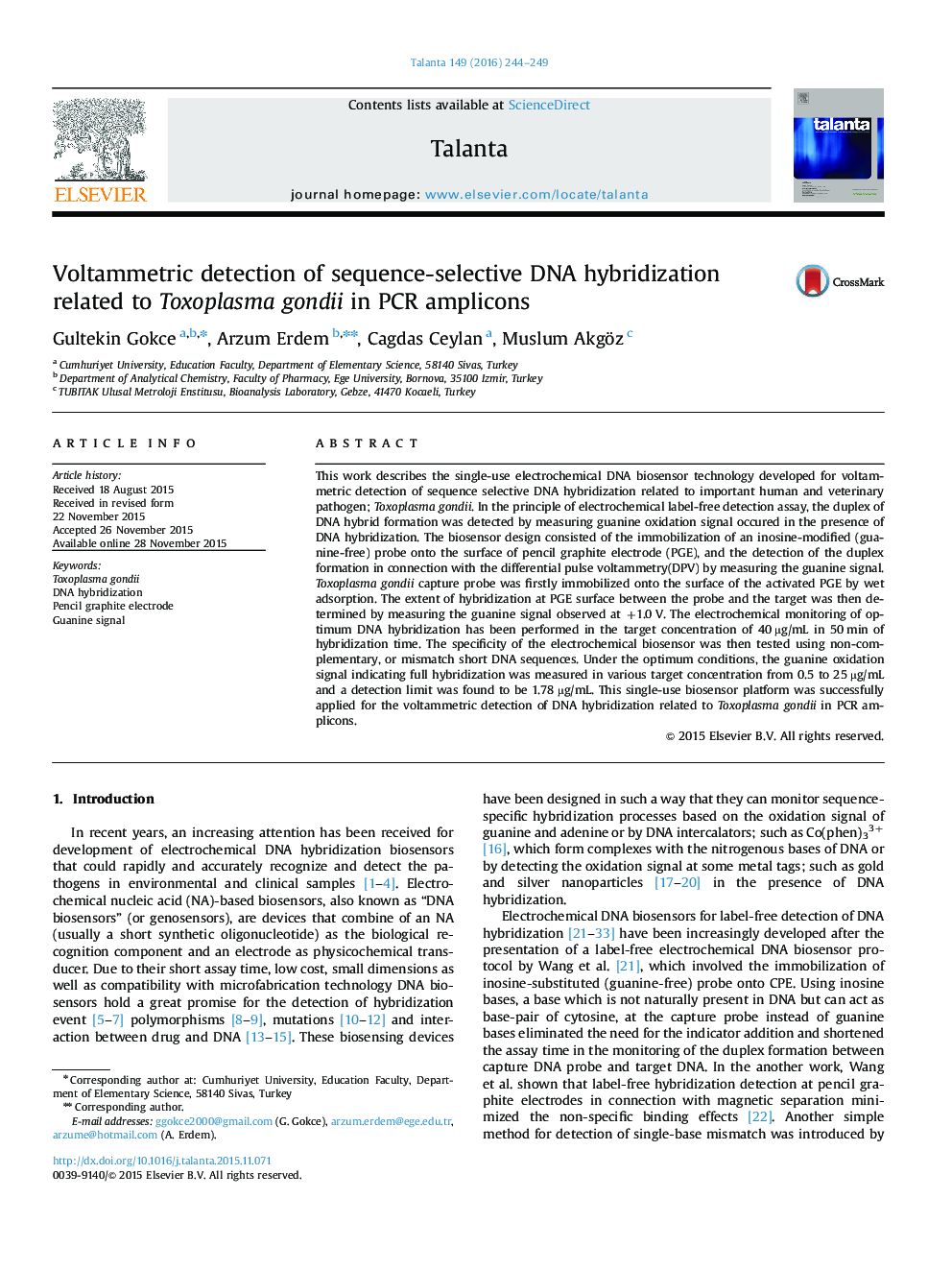| Article ID | Journal | Published Year | Pages | File Type |
|---|---|---|---|---|
| 1241828 | Talanta | 2016 | 6 Pages |
•DNA biosensor for Toxoplasma gondii.•Oxidation signal of the guanine in the presence of DNA hybridization.•Voltammetric detection of DNA hybridization related to Toxoplasma gondii in PCR amplicons.
This work describes the single-use electrochemical DNA biosensor technology developed for voltammetric detection of sequence selective DNA hybridization related to important human and veterinary pathogen; Toxoplasma gondii. In the principle of electrochemical label-free detection assay, the duplex of DNA hybrid formation was detected by measuring guanine oxidation signal occured in the presence of DNA hybridization. The biosensor design consisted of the immobilization of an inosine-modified (guanine-free) probe onto the surface of pencil graphite electrode (PGE), and the detection of the duplex formation in connection with the differential pulse voltammetry(DPV) by measuring the guanine signal. Toxoplasma gondii capture probe was firstly immobilized onto the surface of the activated PGE by wet adsorption. The extent of hybridization at PGE surface between the probe and the target was then determined by measuring the guanine signal observed at +1.0 V. The electrochemical monitoring of optimum DNA hybridization has been performed in the target concentration of 40 µg/mL in 50 min of hybridization time. The specificity of the electrochemical biosensor was then tested using non-complementary, or mismatch short DNA sequences. Under the optimum conditions, the guanine oxidation signal indicating full hybridization was measured in various target concentration from 0.5 to 25 µg/mL and a detection limit was found to be 1.78 µg/mL. This single-use biosensor platform was successfully applied for the voltammetric detection of DNA hybridization related to Toxoplasma gondii in PCR amplicons.
Graphical abstarctFigure optionsDownload full-size imageDownload as PowerPoint slide
